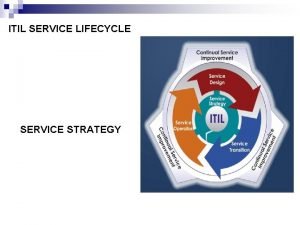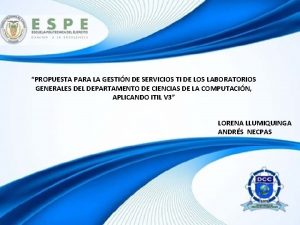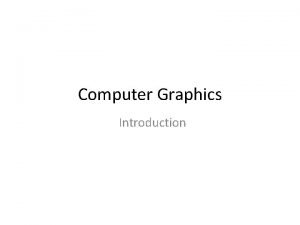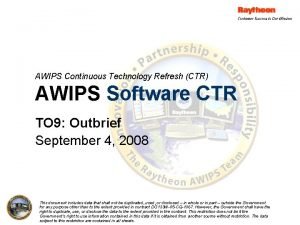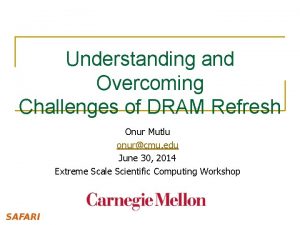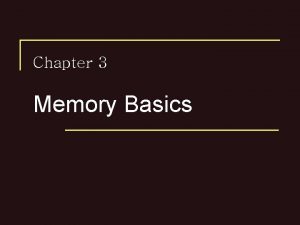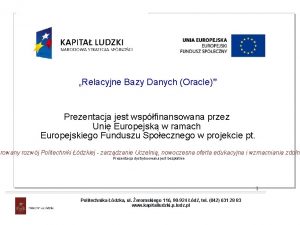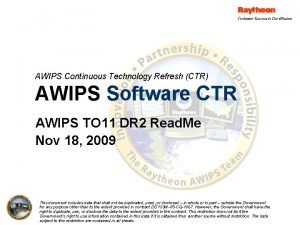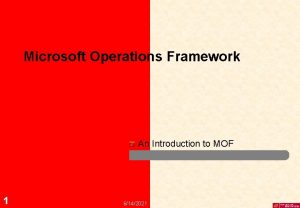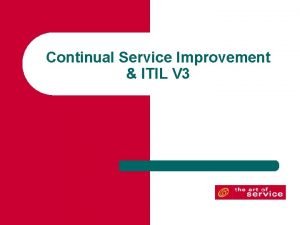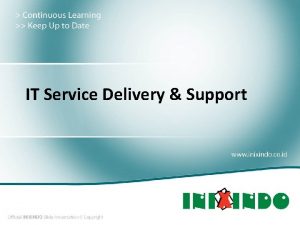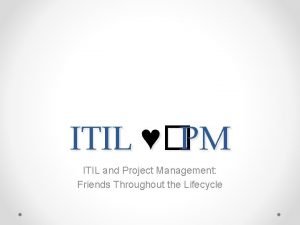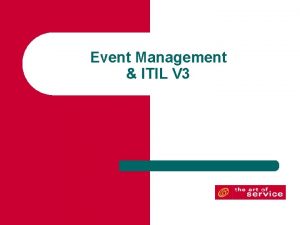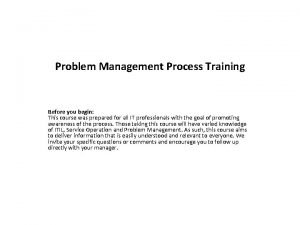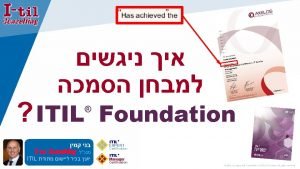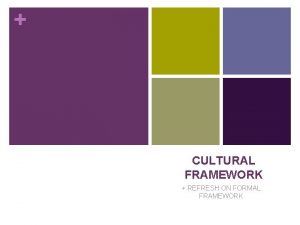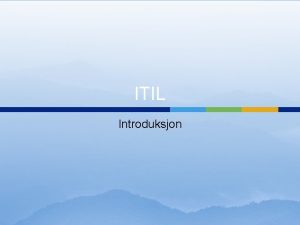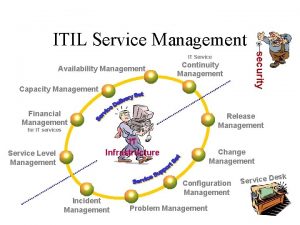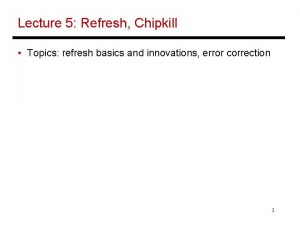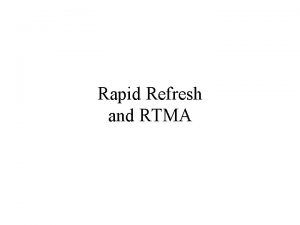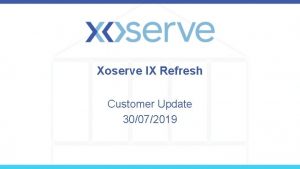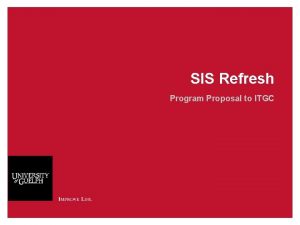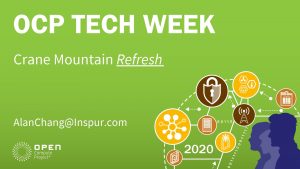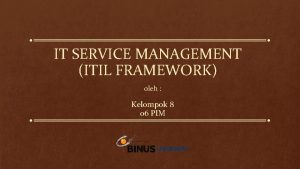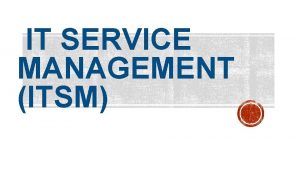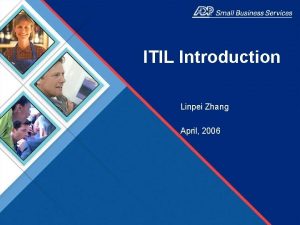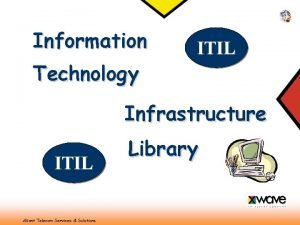Service Management ITIL Refresh ITIL 4 framework supports

























- Slides: 25

Service Management ITIL Refresh: ITIL 4 framework supports our IT reality August 8, 2019 Leetza Pegg UW-IT Service Management Office lrpegg@uw. edu

About Me ● Business Analyst in the UW-IT Service Management Office ● My UW career ○ ○ Came to UW-IT in 2015, but. . . First job was in 1988! Student employee in the architecture library. Microfiche was a big thing! ● Previously worked for Service. Now and a number of ITSM software vendors ● And my own shameless dog plug

About you: Show of Hands…. ● Who is familiar with ITIL/IT Service Management? ● Who has had ITIL training (overview, Foundations)? ● Who works for a department that has implemented ITIL practices?

Agenda ● IT Service Management (ITSM) and ITIL ● ITIL 4 Highlights ● How it Comes Together ● What’s Next

IT Service Management & ITIL

For those new to the concepts…. ● What is IT Service Management (ITSM) ? ○ Implementation and management of quality IT services that meet the needs of the business ○ Carried out by IT service providers through an appropriate mix of people, process, partners, and information technology ● Is that the same thing as ITIL? ○ Though often used interchangeably, ITIL is a framework for approaching ITSM ○ It is the most widely-adopted ITSM framework and is recognized globally ● What is ITIL 4? ○ Since 2007 have been on ITIL v 3 ○ ITIL 4 is the substantial update released earlier this year ○ Better reflects the evolution and maturity of the IT industry itself

Why a new ITIL? ● Businesses have changed ○ As has IT’s role within them ○ Most are in the technology business. . . even if they don’t think of it that way! ● IT has changed ○ From traditional to hybrid cloud ● New practices have emerged ○ E. g. , Dev. Ops, Lean and Agile

A Conceptual Shift…. Adapt and customize Service Management for your org’s needs Use guiding principles to guide decision making Apply governance for direction and control Co-create value with stakeholders based on opportunity and demand through use of services and products ● Break down silos and embrace collaboration ● Leverage complementary frameworks and “Practices: ” e. g. , Org Change, Project Management, Agile, Dev. Ops, Enterprise Architecture, LEAN. . . ● Increase process automation and outcome delivery ● ●

Why We Think ITIL 4 Just Makes Sense ● Focuses on making value-driven decisions, not implementing “process for process’ sake” ● Better emphasizes the crucial roles of people and technology, by focusing on practices ( comprising people, process, partners, and technology) ● Paints a better picture of how ITIL and frameworks (e. g. , Dev. Ops, PMBOK, Lean) “play” together , without seeking to reinvent the wheel

The ITIL Highlight Reel…. .

Seven Guiding Principles 1. 2. 3. 4. 5. 6. 7. Focus on value Start where you are Progress iteratively with feedback Collaborate and promote visibility Think and work holistically Keep it simple and practical Optimize and automate Core to ITIL 4, these common-sense principles provide guidance for sound decisionmaking

The Service Value System focusing on value-driven decisions

Service Value System

Service Value Chain (SVC) operating model for the creation, delivery and ongoing improvement of services

SVC Example: Accessible Technologies Demand University of Washington (UW) and the State of Washington require accessible products. When products are inaccessible, a roadmap that details how and when they will become accessible is required. Engage The UW-IT AT team confirms that a product is inaccessible and engages the UW-IT Service Owner (SO). The SO serves as a liaison, coordinating efforts with the AT team, a service team subject matter expert, and the vendor. The SO escalates the issue by engaging with the vendor, finding the people accountable for improvements who can confirm commitment and allocate resources. Plan The AT team works with the SO to develop an improvement plan. The plan may include confirming executive level sponsorship for the improvements, in-person vendor trainings, working sessions, testing, and maintaining a backlog of improvement issues to ensure steady progress. Design & Transition UW-IT works with the vendor’s product designers to help them make accessible decision choices. Obtain/build The vendor builds improvements into the product. Deliver & Support The vendor incorporates improvements into their software releases. Products & Services The UW-IT Service team leverages the improvements to inform which products and services are released at UW. Value The UW community receives accessible products with an improved user experience. Improve Because products are continuously evolving and vendor staff naturally turn over, continued engagement and continual improvement is essential to maintain priority among competing priorities.

New to ITIL - “Management Practice” ● ITIL 4 introduces the concept of “management practices” as a means of organizing ITSM capabilities ○ Definition: a set of organizational resources designed for performing work or accomplishing an objective ○ Scope: processes, people, technology, and partners (i. e. , the four dimensions) ○ They are sets of capabilities, and don’t necessarily map to an org chart structure ● For those previously versed in ITIL, most of the practices should look familiar……. . .

The Four Dimensions of Service Management emphasizing the crucial roles of people and technology 1. 2. 3. 4. Organizations and people Information and technology Partners and suppliers Value streams and processes

The 34 ITIL Practices General Management Practices Service Management Practices Technical Management Practices Strategy management Business analysis Deployment management Portfolio management Service catalogue management Infrastructure and platform management Architecture management Service design Software development and management Service financial management Service level management Workforce and talent management Availability management Continual improvement Capacity and performance management Measurement and reporting Service continuity management Risk management Monitoring and event management Information security management Service desk Knowledge management Incident management Organizational change management Service request management Project management Problem management Relationship management Release management Supplier management Change control Service validation and testing Service configuration management IT asset management ITIL v 3 process/function (as is, or slightly different name) NOT a standalone ITIL v 3 process/function

What happened to those ITIL v 3 Processes? They’re still there!! They’re still key. ● Previously, ITIL emphasized the processes, called out some functions, and touched on aspects such as org change, supplier management ● ITIL 4 shifts to a practice focus; processes are “simply” one of four dimensions ● Better reflects the diverse and dynamic nature of today’s IT landscape, . e. g: ○ ○ ○ Organizational change is now a practice - part of the Organizations & People dimension Partners & Suppliers are more heavily emphasized, and with a stand-alone dimension Information & Technology is a stand-alone dimension

ITIL is Not Adopted in a Vacuum

It’s not Either/Or. . . it’s And. . . it’s How examples of ITIL and other industry norms coming together ● ● ● The org that has emphasizes a Dev. Ops mindset as part of its guiding principles will use that to shape its Change Control, Release, and Deployment Management practices The Project Management practice that uses PMBOK standards to establish its approach to waterfall projects, yet employs the Agile Scrum methodology to manage deployment activities The Organizational Development practice that is versed in the Prosci methodology, and consults with other practices, emphasizing the Organizations and people dimension The Security Management practice that strives to follow the ISO/IEC 27002 code of practice The Continual Improvement Management practice that uses Lean IT principles to make small, iterative changes to improve customer service

What’s Next?

What We’re Doing in UW-IT ● We’ve made a few small changes ○ ITIL Foundations training will be done on ITIL 4 ○ For those already certified, developing ITIL 4 Overview sessions to highlight deltas ○ Shifting from a process to practice mindset ○ Tweaked some v 3 process names to reflect ITIL 4 names ■ Change Management becomes Change Control ■ Request Fulfillment becomes Service Request Management ● Next steps are being planned (via a minor project) ○ Focus on the value chain (e. g. , UW-IT case studies, aids) ○ Some service management team members attending deeper dive training

Where You Might Start ● UW-IT Fall Quarter ITIL 4 Overview Training ● ITIL 4 Certification Training ● Fill out a Service Management Training request form, or email help@uw. edu with “ITIL Training” in the subject line

Thank you!!! Questions?
 Service v model
Service v model Service strategy lifecycle phase
Service strategy lifecycle phase Csi 7 step improvement process
Csi 7 step improvement process Https://www.servicetonic.es/itil/introduccion-a-itil-v3/
Https://www.servicetonic.es/itil/introduccion-a-itil-v3/ Section 508 update
Section 508 update Calligraphic refresh graphics display
Calligraphic refresh graphics display Technology refresh definition
Technology refresh definition Refresh knowledge
Refresh knowledge Overcoming challenges essay
Overcoming challenges essay Nam sung kim
Nam sung kim Dynamic ram refresh rate
Dynamic ram refresh rate Microsoft campus refresh
Microsoft campus refresh Plasma panel display in computer graphics
Plasma panel display in computer graphics Peps refresh
Peps refresh Refresh and gladden my spirit
Refresh and gladden my spirit Baza danych prezentacja
Baza danych prezentacja Swipe refresh layout
Swipe refresh layout Technology refresh definition
Technology refresh definition Microsoft operations framework
Microsoft operations framework Kpi in itil
Kpi in itil Service delivery manager itil definition
Service delivery manager itil definition Itil service lifecycle
Itil service lifecycle Project management in itil
Project management in itil Itil event management
Itil event management It infrastructure management best practices
It infrastructure management best practices Problem management roles and responsibilities
Problem management roles and responsibilities

